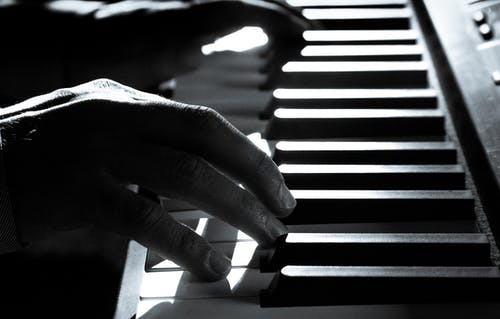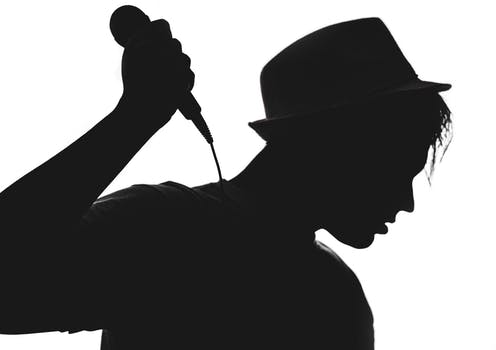When it comes to taking care of my piano, I am very deliberate and intentional about that.
Which is why I get really angry when I see most people using the piano lids to cover their piano keys.
When you invest in a new musical instrument, you want to ensure that you take care of it in the best possible way.
And an expensive piano is one instrument that you can actually mess up the sound if simple maintenance rules are not followed.
One question I keep getting all the time is Should piano keys be covered?
And the answers is NO – using the piano lid to cover your piano keys is actually bad for the piano
One thing you should know is that the keys need to breathe and keeping them closed with the lid is not good for them and can cause the growth of mold and humidity
Humidity and molds usually affect the wooden structure of the piano and if care is not taken can also affect the sound of the piano.
One thing you can do for yourself is to use piano covers that are made from proper materials and designed to protect and keep your piano from suffocating
Many piano covers you can get today come in a range of luxurious velvet and besides the functional benefits also look really beautiful.
Why you need a dust cover on your piano

Dust is actually a huge enemy of digital pianos and generally digital equipments overall
But digital pianos are susceptible for two reasons
- It has electronic components that do not do well with getting dried out or caked with dust and can over time cause corrosion on those components
- Dust actually causes the mechanics and the key action to get clogged up over time.
Think about how thick dust can collect on surfaces and the ground in your homes or offices, then you can imagine how that will feel like in between the keys of your piano.
This will cause the mechanics of your keyboard to become less fluid and sticky and not work as good as you want
The solution to all these problems is using a dust cover
This is especially important if you are using an acoustic piano or slab pianos which do not come with any covers.
Dust covers come in a variety of shapes and sizes
There are the ones that are a little bit longer so they drape down over the instrument or the ones that are only 3 or 4 inches in height that only cover the height of the instrument itself.
You can get generic dust covers and in some cases manufacturers also make dust covers themselves to fit the shape and size of your piano
But the easiest way to deal with this is to simply take the measurements of your piano keys and then get a generic one which is just slightly larger than the dimensions of the piano that you have.
In my opinion, I will highly recommend that you do this if you have the digital piano that is of the slab nature
Do this even if you are not moving it around and even if the room you have it placed in is not a particularly dusty one.
One thing you can count on is that over the course of many years, the accumulation of dust will definitely shock you and will work it’s way between your keys and cause issues with the electronics or the fluidity of the mechanical action.
So here is my one tip, if you own such a piano or even if your piano does not come with it’s own dust cover.
Ensure that you get one to help keep your piano working smoothly for a long time
How To Lengthen The Life of Your Piano
Now we have determined that you need dust covers to ensure that your piano does not pack up on you.
Here are some other tips to keeping your piano running smoothly and perfectly for a very long time.
1. Leave the key lid open on your piano
Keeping your piano closed when not in use is a good habit to have … 70 percent of the time. Dust and air particles can build up into a sticky mess between piano keys, causing mobility issues.
However, if the lid remains closed for too long, mold growth can occur inside the piano. This is especially true if your piano is kept in a dark or humid room.
- Keep the keylid up a couple times each week during daylight hours. Indirect sunlight and proper air circulation will discourage mold growth inside your piano.
- If you have a keyboard, invest in a properly fitted cover. Mold is generally not an issue here.
- A gentle once-over with a vacuum cleaner attachment can help fight off dust buildup.
2. No drinks or liquids at the piano
Do I really need to stress this point?
Fluids and liquids are a big NO around digital instruments such as pianos
If liquid spills and seeps into the piano keys and reaches the interior then it might cause a major fault.
Also it can mess with the piano’s exterior and finishing
Make sure you use a dry cloth and wipe up excess liquids from the keys surface.
Also ensure that you do not press the keys while doing this
If the amount of liquid spilled is too much, then contact a professional technician as soon as possible.
If it is an electric piano, make sure you unplug from the power immediately.
Do not attempt to shake the keys dry as this might push the liquid farther into the components and cause more harm than good.
3. Ensure the humidity is at an ideal level
Pianos are very sensitive to fluctuations in humidity levels.
High humidity will cause the wood to warp and low humidity will cause cracking in the wood.
So what do you do?
Try to keep the humidity at a balanced level
- Monitor your indoor humidity levels, and regulate them with a humidifier or dehumidifier. 40% humidity is ideal.
- Keep the piano away from heater vents and windows, and close the door of your piano room if it is near a kitchen or bathroom.
- Close any windows in your piano room to prevent condensation. This is especially important for your electric piano.
4. Regulate the temperature around your piano
Like humidity, temperature is another enemy of your piano
Cold climate can weaken certain parts of the piano and if you continue using it during these conditions, the parts might snap and break
High temperature also can affect the strings and can loosen the felt on the hammers.
In my opinion, the ideal room temperature should be between 20 – 22 degrees centigrade
Here are some tips to ensure that you regulate the temperature
- Make sure your piano is not close to any exterior walls. It should be at least 2 feets away from the walls.
- Regulate the room temperature with an air conditioner or a heater
- Make sure all doors and windows are closed and never allow direct sunlight to fall on the piano. This can damage the interior and also cause discolouration or cracking of the piano’s finish.
Conclusion
Piano keys should not be covered as this can cause the growth of mold and humidity issues on the keys.
What you want to do is to ensure that you regulate the temperature and the humidity
This will ensure that your piano lasts for a long time and the keys do not get clogged up with dust.



